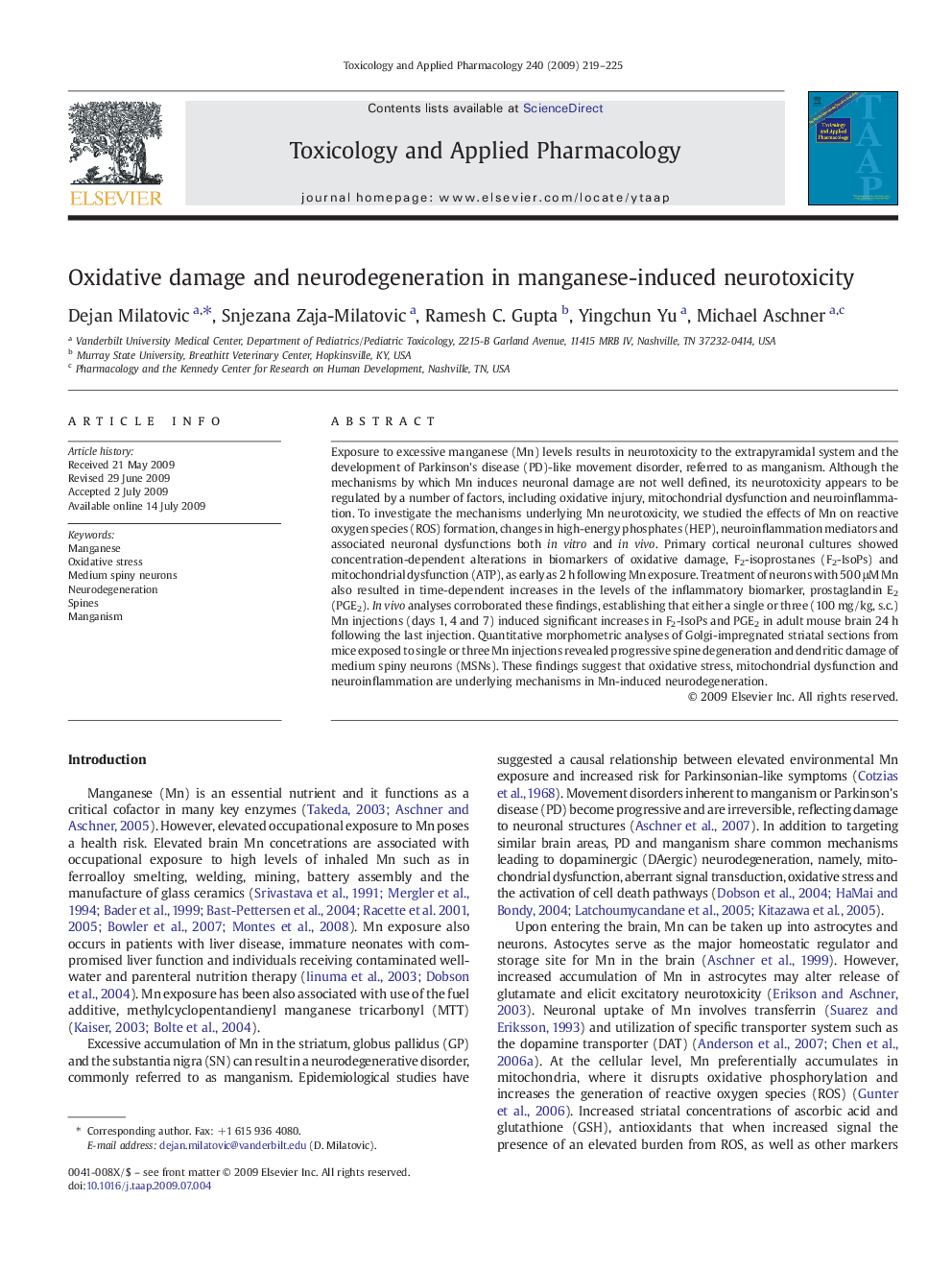| Article ID | Journal | Published Year | Pages | File Type |
|---|---|---|---|---|
| 2570408 | Toxicology and Applied Pharmacology | 2009 | 7 Pages |
Exposure to excessive manganese (Mn) levels results in neurotoxicity to the extrapyramidal system and the development of Parkinson's disease (PD)-like movement disorder, referred to as manganism. Although the mechanisms by which Mn induces neuronal damage are not well defined, its neurotoxicity appears to be regulated by a number of factors, including oxidative injury, mitochondrial dysfunction and neuroinflammation. To investigate the mechanisms underlying Mn neurotoxicity, we studied the effects of Mn on reactive oxygen species (ROS) formation, changes in high-energy phosphates (HEP), neuroinflammation mediators and associated neuronal dysfunctions both in vitro and in vivo. Primary cortical neuronal cultures showed concentration-dependent alterations in biomarkers of oxidative damage, F2-isoprostanes (F2-IsoPs) and mitochondrial dysfunction (ATP), as early as 2 h following Mn exposure. Treatment of neurons with 500 μM Mn also resulted in time-dependent increases in the levels of the inflammatory biomarker, prostaglandin E2 (PGE2). In vivo analyses corroborated these findings, establishing that either a single or three (100 mg/kg, s.c.) Mn injections (days 1, 4 and 7) induced significant increases in F2-IsoPs and PGE2 in adult mouse brain 24 h following the last injection. Quantitative morphometric analyses of Golgi-impregnated striatal sections from mice exposed to single or three Mn injections revealed progressive spine degeneration and dendritic damage of medium spiny neurons (MSNs). These findings suggest that oxidative stress, mitochondrial dysfunction and neuroinflammation are underlying mechanisms in Mn-induced neurodegeneration.
